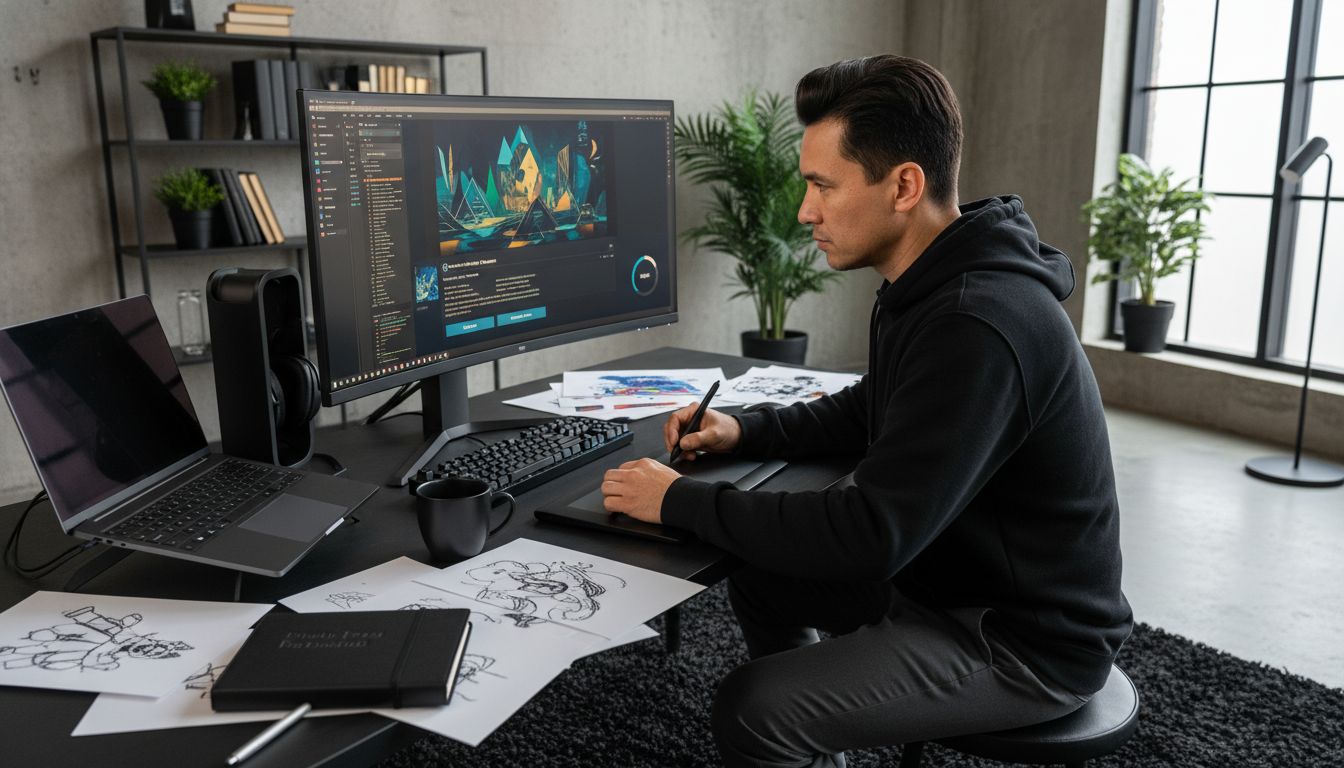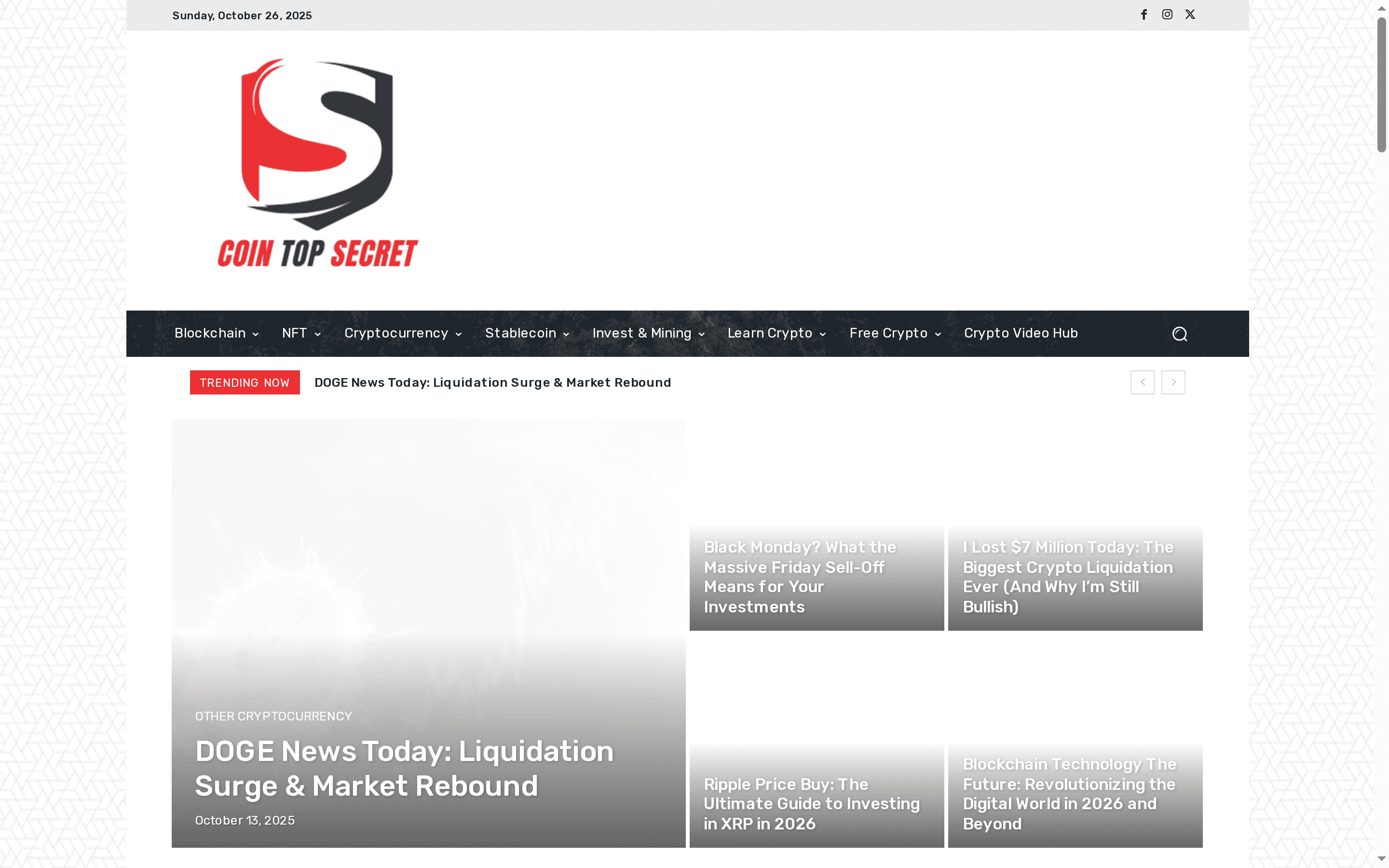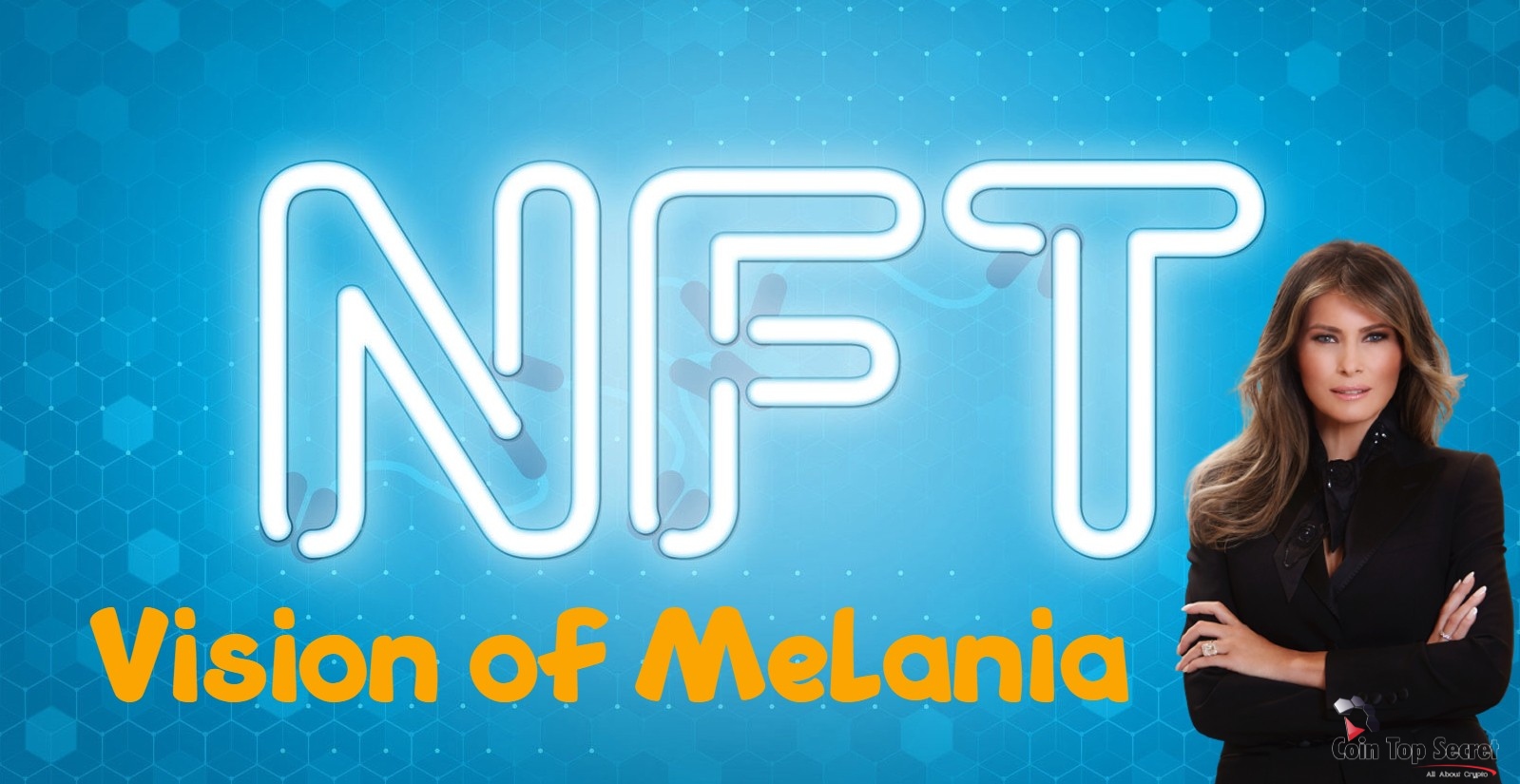Over $40 billion changed hands in NFT transactions in 2021, showing how fast digital assets are changing the way people collect and trade online. Many are eager to jump into this space but wonder how to start safely. Understanding the steps for setting up crypto wallets, picking trusted marketplaces, and protecting your investments can make a big difference in your NFT journey.
Table of Contents
- Step 1: Set Up Your Crypto Wallet And Accounts
- Step 2: Explore Top NFT Marketplaces
- Step 3: Evaluate NFTs For Purchase Or Creation
- Step 4: Buy, Sell, Or Mint Your NFT
- Step 5: Verify Transactions And Secure Your Assets
Quick Summary
| Key Point | Explanation |
|---|---|
| 1. Create a secure crypto wallet | Set up a MetaMask wallet to manage NFTs and cryptocurrencies safely. |
| 2. Explore reputable NFT marketplaces | Research platforms like OpenSea and Rarible to understand their unique features and communities. |
| 3. Evaluate NFTs before purchasing | Assess the creator’s reputation and check NFT authenticity through transaction history. |
| 4. Understand the buying and selling process | Follow specific steps on NFT marketplaces to purchase, sell, or mint NFTs effectively. |
| 5. Verify transactions for security | Always double-check transaction details and use tools like smart contract verification to avoid scams. |
Step 1: Set Up Your Crypto Wallet and Accounts
In this step, you will learn how to create a secure cryptocurrency wallet that enables you to buy, sell, and manage NFTs easily. Setting up your wallet is your gateway into the exciting world of digital asset trading.
First, choose a reliable digital wallet compatible with blockchain networks. MetaMask, according to Wikipedia, is a popular software cryptocurrency wallet that allows interaction with the Ethereum blockchain through browser extensions and mobile apps.
Download the MetaMask browser extension or mobile application. Create a new wallet by following the setup wizard. You will be asked to generate a secure password and receive a crucial recovery phrase. Write down this recovery phrase on paper and store it in a safe location.

Next, connect your wallet to an NFT marketplace. This typically involves clicking a “connect wallet” button and following the authentication steps. Your wallet will serve as your digital passport for purchasing and storing NFT assets.
Pro Tip: Enable two factor authentication and use a unique strong password to maximize your wallet security.
Once your wallet is set up, you are ready to explore NFT marketplaces and start your digital asset collection. The next step involves funding your wallet with cryptocurrency and exploring potential NFT investments.
Remember that understanding the technical standards like ERC-721, which defines rules for creating unique non-fungible tokens, will help you make informed purchasing decisions.
Step 2: Explore Top NFT Marketplaces
In this step, you will discover the most popular and reliable platforms for buying, selling, and trading NFTs. Understanding these marketplaces is crucial for navigating the digital collectibles landscape effectively.
According to research from Gate.com, the top NFT marketplaces include OpenSea, Rarible, SuperRare, Foundation, and Mintable. Each platform offers unique features catering to different aspects of the NFT ecosystem.
Start with OpenSea, the largest NFT marketplace supporting multiple blockchains. As documented by MDPI research, OpenSea provides a vast collection of digital assets and an intuitive user interface. Create an account by connecting your MetaMask wallet and browse through various collections.
Rarible is another excellent platform emphasizing creator empowerment and community governance. This decentralized marketplace allows you to mint your own NFTs and participate in platform decisions. Explore different categories and understand the unique value propositions of each marketplace.
Pro Tip: Always verify the authenticity of NFTs and check the marketplace’s reputation before making any purchases.
Learn more about selling NFTs to understand the complete marketplace dynamics. Each platform has its own strengths some focus on digital art while others specialize in collectibles or gaming assets.
Here’s a comparison of top NFT marketplaces and their key features:
| Marketplace | Supported Blockchains | Unique Features |
|---|---|---|
| OpenSea | Ethereum Polygon Solana |
Largest selection User-friendly UI |
| Rarible | Ethereum | Decentralized Creator governance |
| SuperRare | Ethereum | High-end digital art Curated artists |
| Foundation | Ethereum | Invitation-only Exclusive creators |
| Mintable | Ethereum | Easy minting Low barrier to entry |
Once you’ve explored these marketplaces, you’ll be ready to make informed decisions about buying or creating your first NFT.
Step 3: Evaluate NFTs for Purchase or Creation
In this step, you will learn how to critically assess NFT investments and understand the key factors that determine an NFT’s potential value and authenticity. Evaluating NFTs requires a strategic approach that goes beyond surface level aesthetics.
Research from an academic study analyzing over 3.8 million NFT transactions reveals a critical insight: the top 0.1% of traders known as ‘whales’ significantly influence the NFT market. This means understanding market dynamics is crucial when making investment decisions.
Start by examining the NFT’s provenance and creator reputation. Look into the artist or creator’s background portfolio and previous sales history. Check the blockchain transaction records to verify the NFT’s authenticity and track its previous ownership and price movements.
According to MDPI research, security, transparency, and scalability are critical factors in evaluating NFT marketplace investments. Assess the underlying blockchain technology supporting the NFT. Ethereum based NFTs typically offer robust infrastructure but consider alternative blockchain networks that might provide lower transaction costs.
Pro Tip: Always verify the smart contract details and ensure the NFT comes from a verified creator account to minimize risks of purchasing fraudulent digital assets.
Check our guide on selling NFTs to understand the complete ecosystem of digital asset trading. Pay attention to the NFT’s utility beyond mere collectibility whether it offers additional benefits like access to exclusive communities or potential future value.
By applying these evaluation strategies, you will develop a more informed approach to navigating the complex world of NFT investments.
Step 4: Buy, Sell, or Mint Your NFT
In this step, you will learn how to execute NFT transactions confidently across different marketplaces. Understanding the nuanced process of buying, selling, and minting NFTs will help you navigate the digital asset landscape effectively.
According to Wikipedia, OpenSea is a versatile online marketplace supporting NFT transactions across multiple blockchains including Ethereum, Polygon, and Solana. This platform provides an excellent starting point for your NFT journey.
To buy an NFT, browse the marketplace and select the digital asset that interests you. Check the price, blockchain network, and authenticity. Click the purchase button and confirm the transaction through your connected cryptocurrency wallet. Some NFTs are sold at fixed prices while others use auction formats.
If you want to sell an NFT, research shows that OpenSea allows users to mint NFTs for free and supports both fixed price sales and auctions. Upload your digital artwork, set your pricing strategy, and list the NFT for potential buyers.
Pro Tip: Always factor in blockchain transaction fees and marketplace commissions when pricing your NFT to ensure you understand your potential net earnings.
Learn more about NFT token sales to understand the complete trading ecosystem. Minting involves creating a new NFT by uploading your digital content and registering its unique blockchain signature.
Remember that each transaction requires cryptocurrency for gas fees and marketplace commissions. Start with small investments as you build confidence in the NFT marketplace.
Step 5: Verify Transactions and Secure Your Assets
In this step, you will learn critical strategies for protecting your digital assets and ensuring the security of your NFT transactions. Verifying each transaction carefully is your primary defense against potential fraud and financial risks.
According to research from MDPI, ensuring security and transparency in NFT transactions is vital. Platforms now implement sophisticated user authentication, token contract verification, and seller collection verification to protect digital assets.
Wikipedia details how MetaMask provides a secure interface for managing digital assets. Before confirming any transaction, double check the exact amount, destination wallet address, and associated blockchain network. Even a small typo could result in irreversible asset loss.
Always verify the smart contract address and compare it against official sources. Look for verified collection badges on NFT marketplaces which indicate the creator has been authenticated. Cross reference transaction details across multiple platforms to ensure consistency and legitimacy.
Pro Tip: Screenshot every transaction confirmation and store recovery phrases in a secure offline location separate from your primary digital devices.
Learn more about NFT sales to understand additional security protocols. Implement two factor authentication on all cryptocurrency wallets and trading platforms to create an additional layer of protection.
By developing a methodical approach to transaction verification, you will significantly reduce your vulnerability to potential digital asset scams and unauthorized transfers.
Take Control of Your NFT Journey with Trusted Crypto Insights
Navigating the NFT marketplace can feel overwhelming when you are worried about security, authenticity, and knowing where to buy or sell your digital assets confidently. The article breaks down steps like setting up wallets, evaluating NFTs, and securing transactions but putting this knowledge into action requires up-to-date information and expert guidance. By understanding terms like ERC-721 and learning marketplace differences, you are building the foundation for success in NFT trading and creation.

Start your journey with confidence by exploring detailed guides and market updates at Cointopsecret.com. Our comprehensive content helps you stay aware of critical security tips, marketplace reviews, and investment strategies. Don’t wait to deepen your knowledge—visit NFT Marketplace Guide now and empower yourself to buy, sell, and mint NFTs like a pro. The right information is your strongest asset in this fast-moving digital frontier.
Frequently Asked Questions
How do I set up my crypto wallet for NFT transactions?
To set up your crypto wallet, choose a compatible wallet like MetaMask, download it, and follow the setup wizard to create a secure account. Make sure to generate a strong password and write down your recovery phrase for safe storage.
What are the essential features to look for in an NFT marketplace?
When evaluating NFT marketplaces, look for aspects such as supported blockchains, user-friendly interfaces, and community engagement. Start by exploring the largest platforms like OpenSea and assess their unique features related to your interests in digital assets.
How can I evaluate the authenticity of an NFT before buying?
To verify an NFT’s authenticity, research its provenance, check the creator’s reputation, and review blockchain transaction records for its ownership history. Use this information to ensure you are making a secure and informed investment.
What steps do I follow to mint my own NFT?
To mint your own NFT, first create a digital artwork or asset, then access an NFT marketplace that supports minting. Upload your content, fill out the required information, and set a price or auction format to list your NFT for sale.
How can I ensure the safety of my NFT transactions?
To ensure transaction safety, double-check all details like amount and wallet addresses before confirming any transaction. Implement two-factor authentication and take screenshots of confirmations for your records to protect against potential fraud.
What are the common transaction fees associated with buying and selling NFTs?
Common transaction fees include gas fees for blockchain processing and marketplace commissions on sales. Always account for these fees when pricing your NFT to ensure you understand your potential net earnings.



